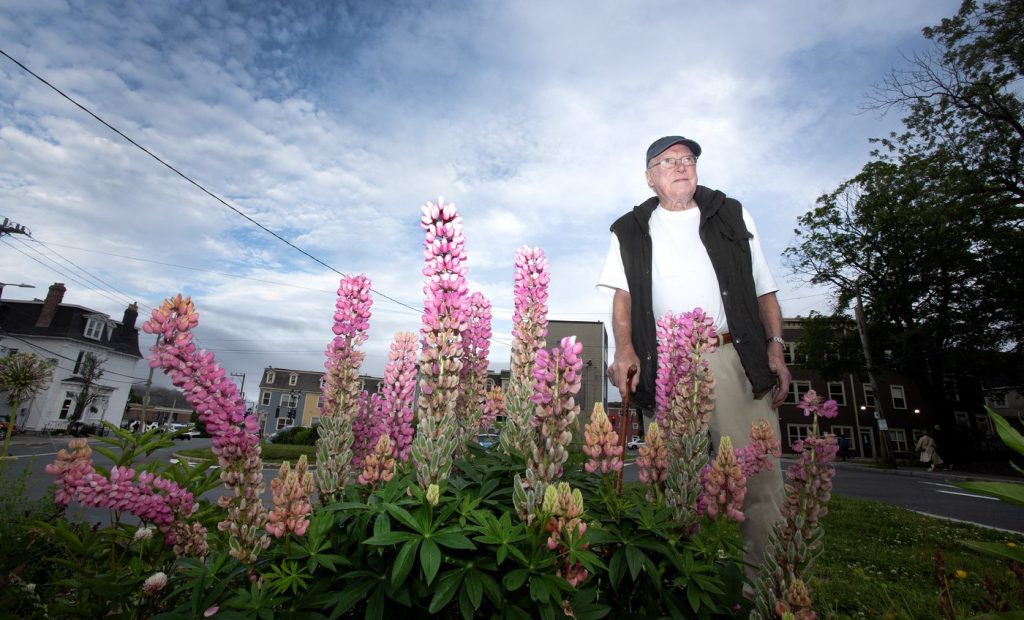HalifaxYesterday: The 1919 Anti-Chinese Riots
Posted Oct 26, 2020 04:44:00 PM.
By February 1919, Halifax and its people displayed few outward signs of any deleterious effects resulting from the unthinkable explosion in the harbour which decimated the entire Richmond District just over a year before. The blast took almost 2,000 lives, caused millions of dollars in property damage and left thousands homeless.
Most citizens rose to the occasion, unified in their efforts to put the disaster behind them and to rebuild the city as well as their sense of community. But the collective suffering brought on by the explosion and the First World War, which ended in November of 1918, was not enough to quell an underlying xenophobic attitude in some quarters towards the small but thriving Chinese Community.
Since the 1830s, Chinese labourers from the British Caribbean used Halifax as a port of entry to the rest of Canada. When construction began on the Canadian Pacific Railway in 1881, many immigrants headed west to join the thousands of Chinese in the work force while others continued on to China. Four years later, the Canadian Parliament initiated a head tax of $50 per Chinese individual to discourage immigration to Canada after the railway was completed. By 1903, the prohibitive tax had reached its maximum of $500. (See Images 1 and 2 above)
Chinese workers were resilient and possessed a strong work ethic. However, their willingness to accept much lower wages than their white counterparts inadvertently contributed to a longstanding racist notion that East Asians constituted a threat, or “Yellow Peril,” to the Western World. The Boxer Rebellion (1899-1901) in northern China solidified this mindset among Westerners well into the 20th century. The anti-colonial uprising, begun by peasants and later sanctioned by the government, was carried out by a secret martial arts organization known as the Yìhéquán (Boxers). Their violent campaign resulted in the massacre of approximately 250 foreigners – mostly priests, nuns and missionaries – as well as thousands of Chinese Christians. (See Image 3 above)
After completion of the CP railway in 1895, some of the Chinese workers made their way to the Atlantic provinces. Racism towards the Chinese in western Canada was prevalent, but they were better received on the East Coast. Many of the newcomers started and maintained successful businesses, including restaurants and laundry services. On the evening of Tuesday, 18 February 1919, the veneer of community acceptance in Halifax was shattered by a series of events which caused the city’s Chinese enclave to suddenly and unexpectedly face the full brunt of unfiltered racist sentiment. (See Image 4 above)
At approximately 11:00 pm, a soldier under the influence of alcohol and a few friends entered the Chinese-owned Crown Café located on Gottingen Street. The soldier ordered a large meal. According to Fong Quin, a leader in the Chinese community,
when it came time to pay the bill, the man refused and became antagonistic. The proprietor, no longer concerned with payment, asked the man to leave but he would not comply. Instead, he threw ten cents down on the counter and demanded a package of cigarettes. The owner told him it would cost five cents more for the pack. The man then switched off the restaurant’s lights and grabbed for some money in the open cash register. After taking $75.00, he tossed the register through the front glass window and
started yelling for help. While this was going on, the Chinese customers had gathered at the back of the café. (See Image 5 above)
After the police arrived, the soldier and his friends left the café. However, the disgruntled men returned soon afterwards. As a crowd began to gather on the street, a rumour that a recently returned soldier had been brutally assaulted by a Chinese man spread like wildfire. The mob descended on the restaurant and destroyed everything in sight. Several onlookers were pelted with stones. The rioters, made up of soldiers and civilians, went on to attack other Chinese owned establishments. They stole laundry, eating utensils, a typewriter, tobacco, and assorted smokes, and badly beat up a laundry keeper named Fang Wong on Agricola Street.
Tables, chairs, cash registers, and stoves were smashed or sent flying through windows. After damaging establishments along Gottingen, Brunswick and Barrington Streets in just a few hours, the unruly mob was finally confronted and subdued by the police who also arrested alleged instigator, Thomas Andrews, and two men responsible for thefts. A man named Samuel Lesser was also arrested for the assault of Fang Wong.
Halifax was no stranger to violent post-explosion protest. In May of 1918, City Hall was besieged by rioters after a drunken sailor was arrested. Civilians, sailors and soldiers wrecked a police courtroom and offices, and smashed windows and doors.
They also set two small fires which were extinguished before any major damage could occur. The disorderly throng overturned cars and threw a stolen police motorcycle and wagon into the harbour. An understaffed police department could not control the crowds but did arrest several personnel whom they subsequently handed over to navy and army officers.
Less than a year later, mob rule once again took over the city. One night of violence had not been enough, and the arrest of Thomas Andrews did nothing to quell the unrest. In the early evening of 19 February, the malcontents began assembling on street corners with the goal of “raiding businesses whose proprietors were believed to be aliens.” As they began sweeping south through the downtown district, their numbers grew into the thousands. At least ten shops were damaged or completely destroyed from the Gottingen Street area to Barrington and Sackville Streets.
The owner of the Crown Café had just repaired his windows only to have them broken again. However, the destruction went beyond the Chinese businesses. Stores owned by those in the Jewish and Assyrian communities were also attacked. Finally, police armed with clubs forcefully charged the rioters and succeeded in routing them, sending several of their numbers to the hospital. Nevertheless, it took several more hours before the crowds were completely dispersed.
The citizens of Halifax were outraged by these racially motivated attacks and called on City Council, police and the military to take immediate action. Following the second night of unrest, the Halifax Herald displayed photographs of the destruction. The
headline appeared in bold type asking: “HOW LONG WILL DECENT CITIZENS TOLERATE THIS? The paper published photos of the police chief, Francis Hanrahan and Mayor A. C. Hawkins asking the question: “Well, Gentlemen, What Are You Going To Do?”
The Herald called the raids the “most flagrant violations of justice and law and an utter disgrace to the capital of Nova Scotia,” stating that the work ethic of Chinese citizens was something that native born people “might well emulate.” The article went on
to say “the Chinese deserve the best protection that the laws and statutes can or should guarantee them,” and called for those who committed the crime against the Chinese business owners to be “rounded up and punished.” (See Images 6 and 7 above)
The raids caused over $12,000 in damages, $8,500 to Chinese restaurants alone. However, on 13 March, City Solicitor, F. W. Bell, advised the Board of Control to disavow responsibility for any of the sustained damages. They ignored pleas for a settlement from Mayor Hawkins and one of the controllers, John Murphy, as well as numerous petitions from those directly affected by the rioting.
Unfortunately, politics played a major part in the lack of reaction by city officials. By 1919, the centralized Board of Control system, initiated six years before, had lost public support. Internal animosity and power struggles throughout the local government resulted in the resignations of a dozen aldermen in the fall of 1918, leaving the mayor and four controllers to manage the city’s business. At the time of the riots, the city still had no quorum for council. Following a provincially enacted plebiscite in the spring of 1919, the Board of Control was terminated. Ultimately, no further action was taken regarding compensation for damages caused by the riots.
Sources: Halifax Municipal Archives (articles by Elizabeth O’Brien &; Adam Meyer); articles in the Halifax Herald; www.britannica.com; www.thecanadianencyclopedia.ca.








